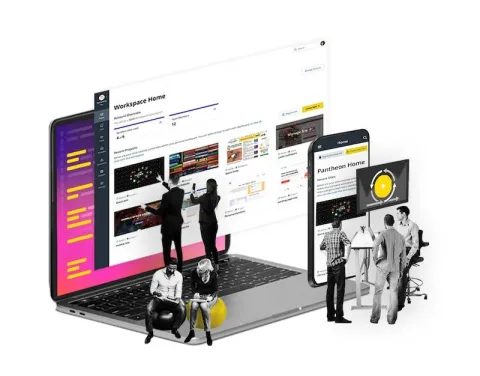Website Not Converting? Here are Six Ways to Fix It
Image

Many companies make the mistake of thinking that building a website is all it takes to bring in traffic for years to come. But when companies view a site as a set-it-and-forget-it proposition, users tend to forget it, too. That's when traffic dries up.
To be an effective marketing tool, your website needs to be a dynamic entity. That's why it's crucial to invest the time and resources needed to keep a website fresh and relevant. It's not necessary to do a complete site overhaul every few years; by adopting an agile approach, you can boost customer engagement and use your website to drive business.
How Marketers Can Measure a Website’s Effectiveness
Adopting an agile approach, in this context, means using data to rapidly deploy tests and iterate on the results. Marketers and designers can start optimizing a website even before a new version is officially launched.
The best place to start is by agreeing on a minimum viable product and releasing that version of your site to a select user group. A/B test landing pages or specific features and measure the engagement of the old design versus the new one to see whether you're headed in the right direction.
Set performance goals around specific elements like accessibility, search engine optimization and first meaningful paint — how long it takes for your main content to show up on a page—in your development plan. Lighthouse is a useful testing tool that can audit the pages of your site and report on its performance in these areas.
Once a new version is launched, rerun those tests to see how the updates impacted performance. Traffic and conversions aren’t static numbers. The only way to keep them healthy is to monitor and evaluate them regularly. Otherwise, you’ll end up with poor performance and no clear way out.
How to Figure Out What’s Keeping Your Conversions Down
If your website seems stuck in a conversion slump, there are a few things you can do to figure out the source of the problem and get yourself back on track.
1. Perform an SEO audit.
If you have low traffic or minimal conversions, it may be because your website is hard to find. Perform an SEO audit using tools like Lighthouse and Google Search Console. For a more in-depth analysis, hire an SEO firm to help with your evaluation. The results will give you a list of tasks to improve SEO and increase organic traffic.
2. Simplify your forms.
The more fields your forms have, the less likely a user is to complete them. Take a hard look at the forms on your site and see what you can remove while still getting value from your leads. One way to reduce the number of fields is to leverage data enrichment tools that can supplement forms on the back end so the user has less information to contribute on the front end.
3. Regularly update popular posts.
According to HubSpot, one in 10 blog posts is compounding—meaning it increases traffic over time, thanks to organic searches. One compounding post creates, on average, the same amount of traffic as six typical posts, which lose traffic over time. Pinpoint these valuable posts and update them regularly. Search engines will reward you for keeping your content fresh, and you’ll be certain that this content will have a ready audience.
4. Be tactical about keywords.
It’s not enough to just write content you think your readers want to consume. You also need to do keyword research and inject high-value terms into your posts. Answer real problems your audience is trying to solve and pepper in outbound links that readers will find useful. Don’t just stop at the written word, either—include images with relevant titles in posts. That expands the ways people can find you on the web.
5. Acquire high-value backlinks to your site.
Backlinks from credible websites are highly valuable to modern SEO. One of the most effective ways to cultivate these backlinks is through a newsworthy event. If you have the budget to invest, work with a public relations agency to set up something that can create buzz, driving valuable links to your site that will have a lasting effect.
6. Invest in new technologies.
Legacy technology can weigh down your site and hurt conversion rates and traffic volume. If your website has been around for a while, it might be time to reevaluate the content storage management, hosting platform and plugins you rely on. Explore new tools like accelerated mobile page templates, or give your development team more flexibility by going headless.
While these are all effective methods to increase traffic and conversions, they will only stay effective if you perform them consistently. Taking an agile approach to your website will keep it fresh and optimized to meet changing reader demands.


